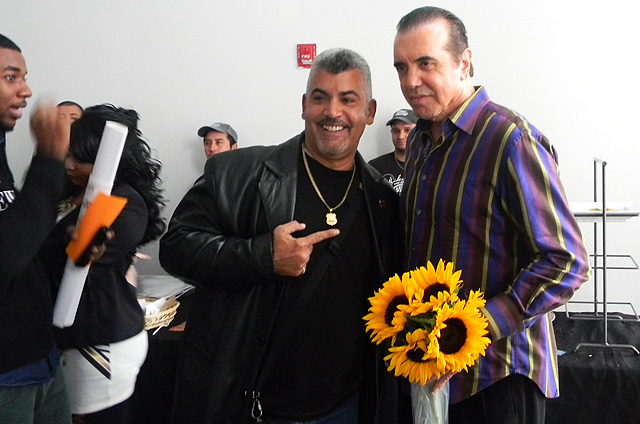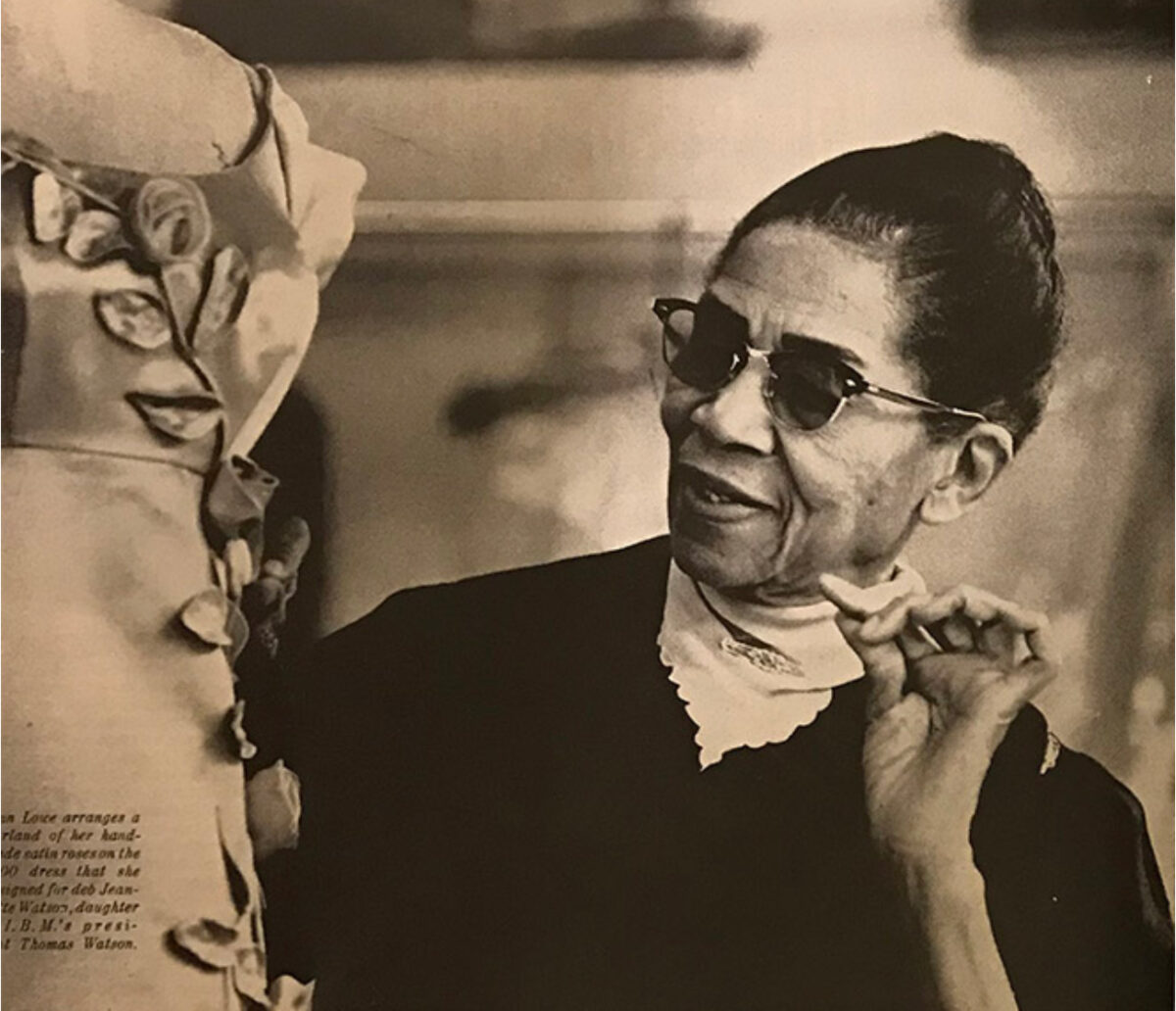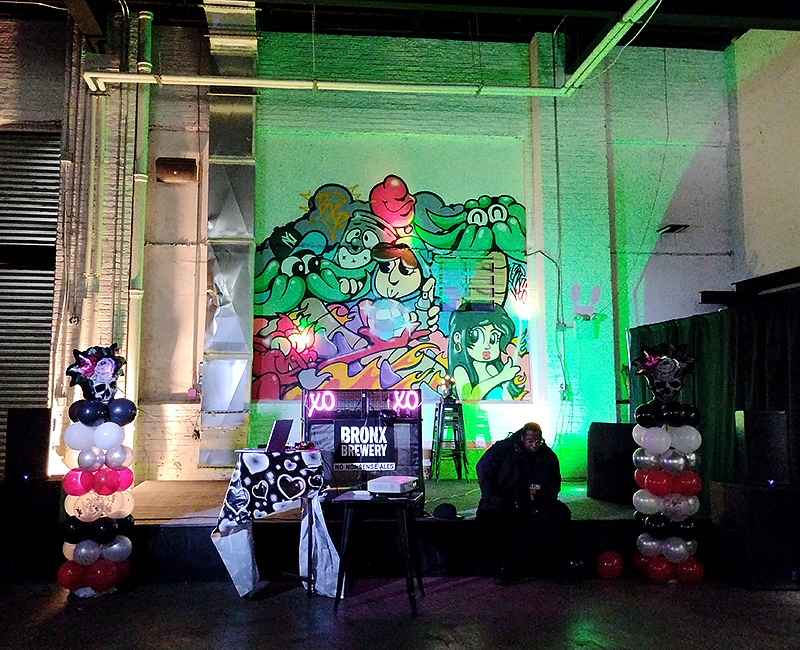By Allan Aracena
Over 200 people packed a dining hall in the Bronx Museum of the Arts to hear Chazz Palminteri tell the story behind his semi-autobiographical one-man play, “A Bronx Tale.”
Palminteri grew up on 187th Street and Belmont Avenue in the Bronx and went to Clinton High School, then to Roosevelt, where he became part of the class of 1969. He wrote plays for a while before getting his first break with “Guys in the Truck.”
After a stint working on Hill Street Blues in Los Angeles, Palminteri returned to New York, where he started writing “A Bronx Tale,” a story about a murder Palminteri says he witnessed when he was nine. The cops put plenty of suspects on the wall, says Palminteri, most of them wise guys from the neighborhood. They asked him to identify the killer, but he didn’t. Instead, the killer would become Palminteri’s mentor, he explains, and would teach him about respect, fear, and The Prince by Machiavelli. He would also become the model for Sonny, a mob boss in the play.
Eventually, Palminteri finished the play and then approached movie directors about turning it into a film. They were receptive, Palminteri says, but did not want to cast him as a co-star with Robert De Niro. He says they offered increasingly larger sums for him not to play Sonny, which he resisted. Finally, Palmintieri says, he had a handshake agreement with De Niro that he would be in the movie, play Sonny and write the screenplay.
Robert De Niro plays a character based on another man who was an inspiration in Palminteri’s life – his father. When he was young, Palminteri’s father drove the 12 bus to City Island, passing through the family’s neighborhood. However, gang fights forced the MTA to move the bus stop, says Palminteri. There were racial tensions between local Italians and African-Americans who passed through on the bus, says Palminteri, adding that some times rock throwing escalated to fights spilling into the neighborhood.
Calogero Anello is the primary character in the movie and his dad is also a bus driver. Some of the dialogue between the two in the film such as the father’s admonition, “The saddest thing in life is wasted talent” come from Palminteri’s dad. Palmintieri says that his father used to leave cards with those words in his room when he was about nine.
In “A Bronx Tale,” Calogero has a love interest who was black. This wasn’t Robert De Niro’s idea, contrary to what many people may think, says Palminteri. He explains that he himself had a crush on a girl who was black when he was 17. The people from his neighborhood seemed to disapprove, he says. In the movie, Calogero’s dad seems to disapprove as well. Palminteri says he wasn’t really sure how his dad felt about it, but that the story line was there to illustrate how prejudice can be passed down from generation to generation.
At the end of his Bronx Museum talk, Palminteri described a trip to Baltimore where he met a 15-year-old in solitary confinement. The youth, an aspiring artist, was doing time for an attempted double homicide. Palminteri says he brought a card with his father’s warning about wasted talent which he took out and handed to the teen before he left. A few weeks later, says Palminteri, he got a drawing of a horse on that card in the mail.
Palminteri closed the event by sharing something his father told him as a kid. “In this world, there are two kinds of people: the givers and the takers. The takers will just take, but the givers help you sleep better at night.”












No comments